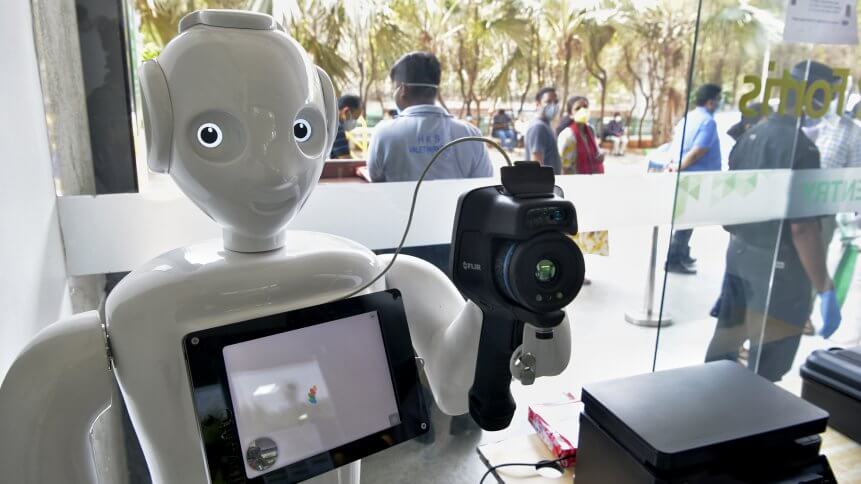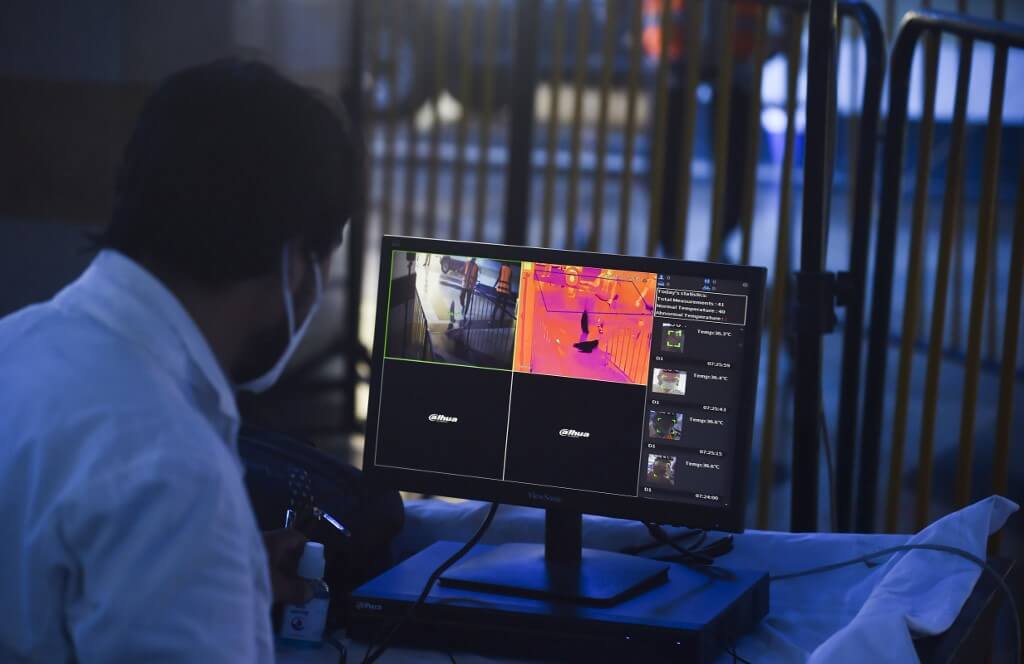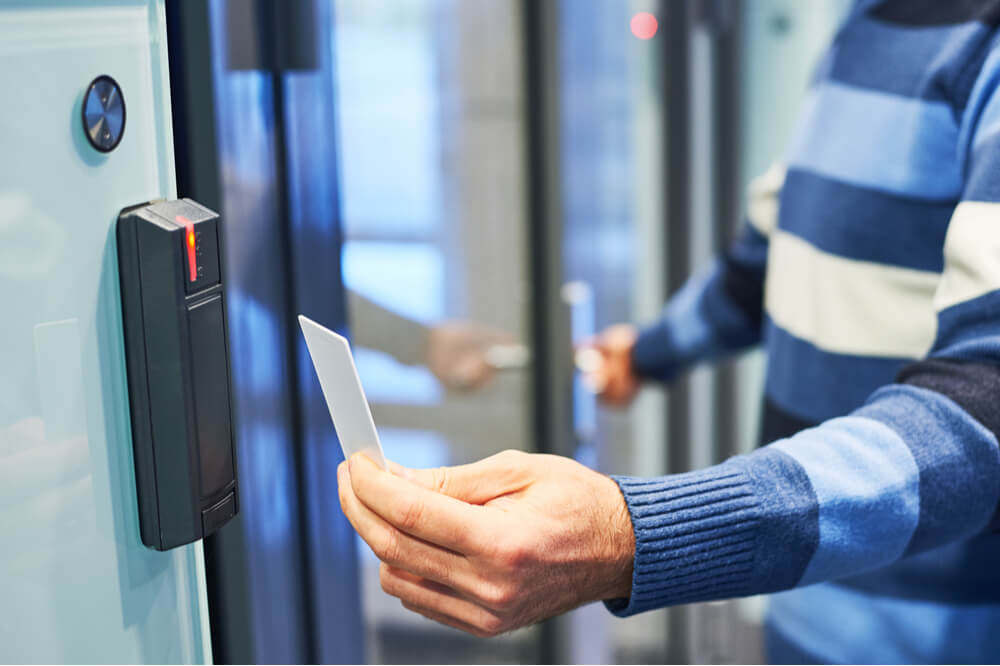5 ways technology can support the post-covid recovery

- While flexible working routines may stick, many businesses are slowly easing back into workplaces
- Processes to ensure safety will include staff rotations, social distancing measures and screening
- Here, we look at some of the more innovative tech-driven solutions on offer
With government lockdown measures starting to lift and urging those who can’t work from home to return to their working environments if safe to do so, many organizations will be tackling new challenges of how to make their workspace safe and ‘Covid-secure’.
In order to make this shift successfully, businesses will need to make the necessary changes to support this transformation and maintain continuity.
The introduction of flexible and remote working had been a gradual process for many organizations, as employers saw the benefits of improved productivity and a better work/life balance for staff, among many others.
But there are a number of factors that are lost without an office environment – the social cues that can only be experienced in a physical environment, water-cooler moments, peer review, better productivity and ‘people skills’. While many are starting to return to the workplace, there are still a number of risks. Even though the infection rate of Coronavirus is described as stable, we are still in the midst of the pandemic, and every precaution must be taken to keep staff safe within the work environment.
Basic processes such as limiting the number of people in the office, regular hand washing and cleaning, stopping ‘hot-desking’, spacing employees further, apart and deploying screening between desks can all play a part.
A March survey of service providers confirmed that the use of collaboration, audio and video conferencing technologies and services they offer has increased exponentially as a result of the impact of Covid-19 (50-100% in many cases). But what will happen in a post-Covid-19 world, and how will technology impact our lives and working practices?
# 1 | AI-assisted CCTV networks
AI systems that can use CCTV networks and video feeds from drones to count in real-time how many people are gathered together in airports, train stations and shopping centers, and those with masks on, are now in deployment.
As lockdown measures are gradually lifted, social distancing will become increasingly more challenging as the number of commuters rises and consumers return to stores.
AI systems can, therefore, help to monitor the density and flow of people, alerting when gatherings of too many people are occurring in one place, enabling measures to be taken earlier to restrict numbers and disperse groups. In the UK, people counting systems are under consideration by retailers to help manage the now commonplace ‘one-in-one-out’ operational practices launched by Aldi in the height of the lockdown, and which now will be commonplace in the new retail environment when restrictions are lifted.
# 2 | IoT technology for temperature monitoring
IoT technology, including temperature monitoring solutions using thermal cameras, such as those used at Amazon, Vodafone, UK Airports and Chinese building reception areas, can be an ideal solution to alerting facility managers, employers and employees to potential viral symptoms before coming into contact with colleagues or fellow travellers.

A railway employee monitors thermal images on a screen as passengers arrive to board a train to Rawalpindi at a station after the government eased a lockdown imposed to prevent the spread of the COVID-19 coronavirus in Lahore. Source: AFP
Such systems can scan up to eight people at once, keep the monitoring process contact-free, and are used in place of the hand-held manual temperature checking devices. But these setups are not just for the larger enterprises. Companies of all sizes are starting to use temperature monitoring terminals placed in the entrances of buildings in an attempt to detect symptoms as early as possible.
# 3 | Enterprise contact tracing apps
Use of enterprise contact tracing applications that inform us and others about potential exposure to infected persons will become part of the day to day routine, as government initiatives roll out and more people download and use the apps.
Data privacy is a concern with this approach; however, the Bluetooth-based data gathering method is less intrusive than analysing credit card transactions or CCTV footage, and several countries including Singapore are working on methods such as manual contact of affected persons after reviewing data to improve data privacy.
# 4 | Contactless touchpoints
Office practices and processes will also be affected. Automation of frequent touch points such as door handles, elevators and sanitary systems is already under way. Use of voice activated system technology that we already use in our smart speakers at home will be a key element of design to avoid touching surfaces. There has also been commentary about the feasibility of changing surface materials at regular touchpoints to materials that interfere with virus reproduction, such as copper (which researchers say kills viruses such as MERS and H1N1 in minutes).
Inside, hand soap and sanitizer bottle fill levels will be monitored, the mandatory 2-meter distance between people monitored and alarmed via infrared beams, seating will be further apart, movement around the office and density in recreational areas will be monitored and analysed by infrared internal camera systems, working with AI algorithms as described above.

Contactless door handles can reduce risk at regular touch points. Source: Shutterstock
Pre-Covid, in Pittsburgh International Airport, such a system has already been in use to intelligently count line lengths and estimate waiting times for security, aiding operations and increasing user satisfaction. In a post-lockdown world, the same system will regulate and direct people traffic flows around the airport, according to rules set by airport managers.
# 5 | Remote collaboration tech
The huge spike in remote collaboration technology usage by a legion of remote workers has proven to stress broadband networks and impact application performance. These networks at home and in branches will be strengthened by additional connectivity/resilience options to ensure a good user experience and to underpin productivity.
Despite these challenges, the technology has proved itself capable of supporting workforces, customers and operational processes. And as some return to work, technology will continue to support businesses, enabling companies to scale and employ flexible workforces in new regions – both nationally and internationally. Remote contact center operations and help desks have always been virtualized, but are now expected to be expanded to homes to help reduce office footprints and in some cases, close buildings.
Many companies weren’t prepared for a shift in business structures, operational procedures and modelling, which may put them at a severe disadvantage if they don’t get the right tools in place. With the economic pressure caused by Covid-19, without a way to reliably transform to a new way of working or to diversify their offerings could spell the end for many organizations.
4G connectivity, hardware, software, hosted telephony, unified communications and collaboration services, layered security are all tools that can be tailored and flexed depending on the specific need of the business – either on a temporary or permanent basis. The ‘new normal’ requires agility, flexibility and adaptation to change – technology can facilitate and support this.
This article was contributed by Nick Sacke, Head of IoT and Products at Comms365.










